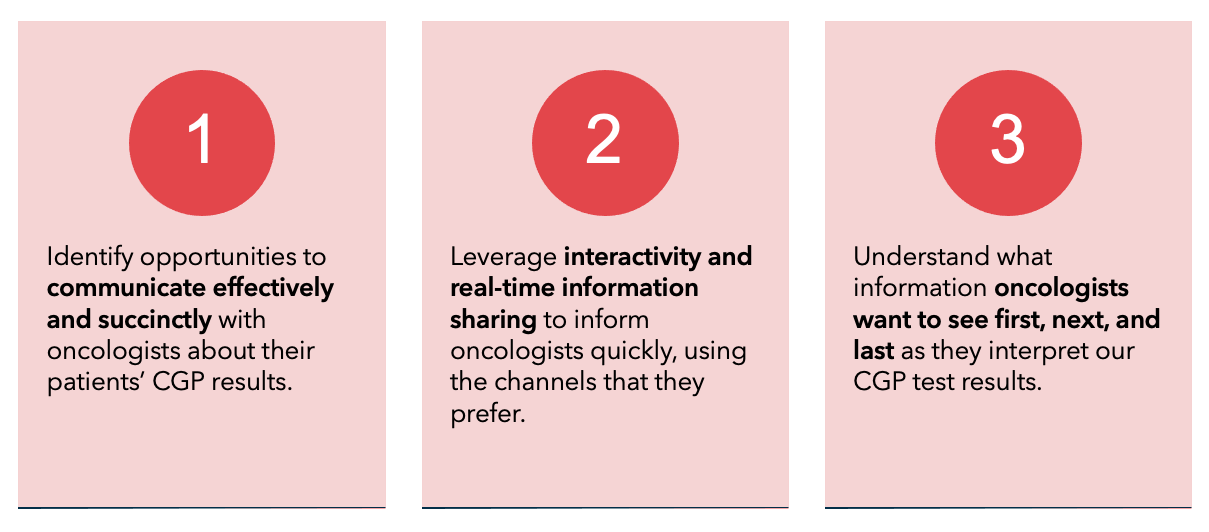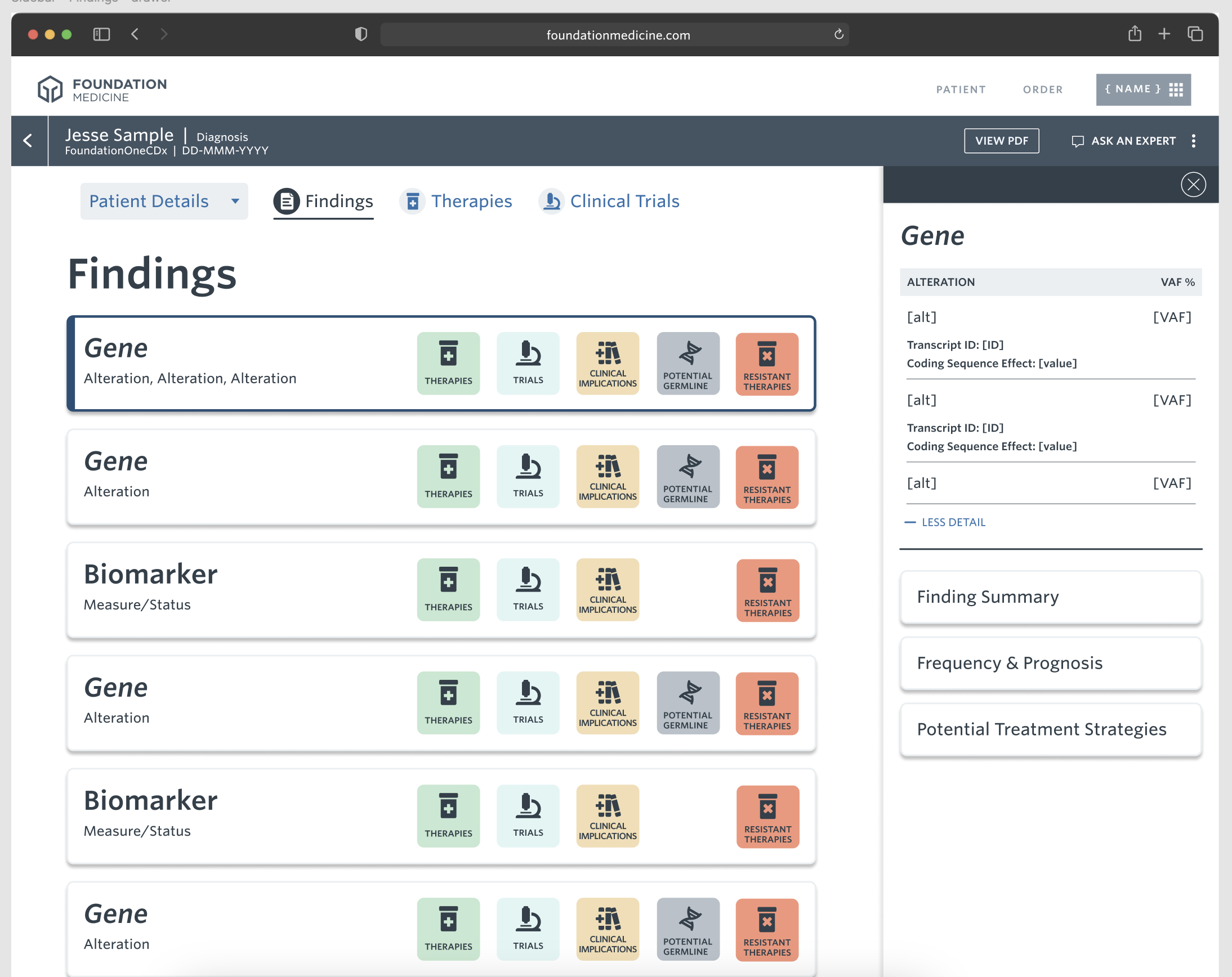Interactive Oncology Reporting
Case study on communicating complex genetic profiling results to oncologists and their patients.
Early design concept for communicating patient oncology results digitally
Interactive Oncology Reporting
Interactive Reporting is an ongoing initiative at Foundation Medicine focused on Communicating Complex Information to Oncologists, Patients, and their Caregivers communicating the results of Foundation Medicine’s Comprehensive Genomic Profiling (CGP) cancer tests to oncologists, pathologists, patients, and their caregicvers.
The Challenge: Communicating Complex Genetic Information to Multiple Users
How might we deliver a superior customer experience and transformative patient empowerment through an easy to use, integrated, dynamic digital reporting experience that ensures patients get the optimal treatment?
Research: Understanding Oncologists and the Context of Genomic Testing for Cancer
The initiative to refine Foundation Medicine’s methods of communicating genomic testing results came from a deep dive into how oncologists work, their varying levels of familiarity with this type of testing, and what they might need to make the the next best clinical decision for their patients.





Patients and Caregivers: How Can Genetic Testing Support Treatment Options?
The Foundation Medicine Design Team then partnered with IDEO to research patients and develop archetypes for patients and their caregivers. This research helped us understand patients’ needs for understanding the results of their genomic testing with Foundation Medicine, how these results can and should be communicated, and in wat ways Foundation Medicine can serve as an ally in their cancer journey.





Report Taxonomy: Pain Points and Opportunities
We then examined the current structure and taxonomy of Foundation Medicine’s CGP reports to identify areas where our users may have trouble interpreting the genomic profiling results, where more (or less) information is needed, and how this information can be used to guide clinical decicion making.
Getting Interactive: Designing Concepts to Communicate More Effectively
Based on our analysis of the existing report’s taxonomy, our knowledge of of users’ needs for varying levels of interpretive content from the CGP report, and how they use — and would like to use — this information, the design team began to iterate on the idea of an interactive reporting experience. This would include ways to quickly and effectively report the most important findings of a patient’s genomic profiling, provide FDA-approved diagnostics and therapies, and access to relevant clinical trials.
This would fundamentally change the Foundation Medicine report from a static, 20+ page PDF to a real-time results portal for oncologists to dig as deeply as they wanted into relevant clinical data for their patients.









Piloting the Concept
The design team worked closely with internal translational oncology, product strategy, marketing, and engineering stakeholders to pilot the interactive report with a select group of Foundation Medicine customers. The pilot experience focused on providing 3 critical elements of the report to customers in both mobile and desktop formats: prioritized genetic findings from CGP testing, FDA-approved therapies and prevision medicines, and clinical trials. The oncologist would be presented with these main components of the report, and have the option to go in-depth into any aspect of the main components via progressive disclosure.
Pilot Feedback
As we gathered feedback from the pilot, we uncovered some key insights that to further iteration on both the interactive report, as well as the traditional PDF report.
When reading FMI’s cancer genomic testing reports, oncologists often have one of three things in mind: Is the current therapy I have my patient on working for them? Are there new biomarkers or findings that I need to pay attention to? Are there clinical trials that are close to my patient that would be relevant?
While the interactive report is incredibly helpful for getting notified and reading a patient’s results on the go, the PDF still has utility for 2 primary reasons: many Oncologists use the appendix content in the PDF report to “dig deep” into details around the gene and biomarker findings, and they often cut and paste this information into their progress notes in the patient’s electronic medical record.


Refinements and Next Steps
The Foundation Medicine Design Team has been making refinements to the interactive and PDF reports based on the pilot and ongoing feedback. We have prioritized several key aspects of the report, including: showing which genetic results are most actionable, displaying a patient’s progress over time through our new monitoring feature, and simplifying the key clinical insights of each report to make oncologist review simple and streamlined.








